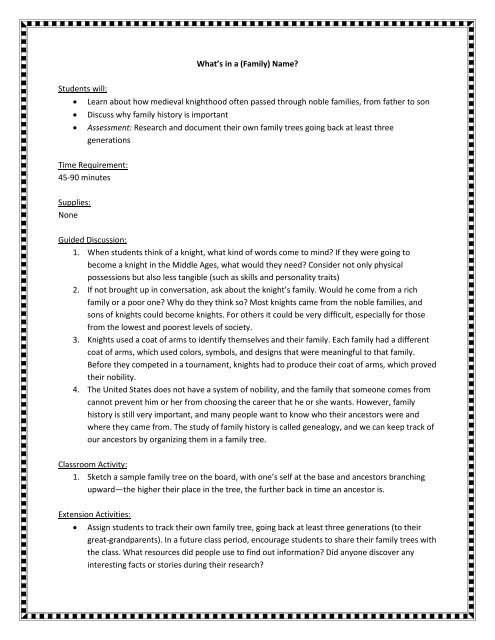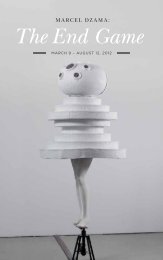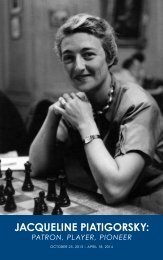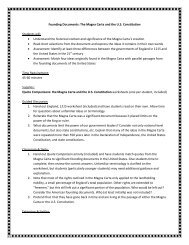What's in a (Family) Name? Students will: ⢠Learn about how ...
What's in a (Family) Name? Students will: ⢠Learn about how ...
What's in a (Family) Name? Students will: ⢠Learn about how ...
- No tags were found...
Create successful ePaper yourself
Turn your PDF publications into a flip-book with our unique Google optimized e-Paper software.
What’s <strong>in</strong> a (<strong>Family</strong>) <strong>Name</strong>?<strong>Students</strong> <strong>will</strong>:• <strong>Learn</strong> <strong>about</strong> <strong>how</strong> medieval knighthood often passed through noble families, from father to son• Discuss why family history is important• Assessment: Research and document their own family trees go<strong>in</strong>g back at least threegenerationsTime Requirement:45-90 m<strong>in</strong>utesSupplies:NoneGuided Discussion:1. When students th<strong>in</strong>k of a knight, what k<strong>in</strong>d of words come to m<strong>in</strong>d? If they were go<strong>in</strong>g tobecome a knight <strong>in</strong> the Middle Ages, what would they need? Consider not only physicalpossessions but also less tangible (such as skills and personality traits)2. If not brought up <strong>in</strong> conversation, ask <strong>about</strong> the knight’s family. Would he come from a richfamily or a poor one? Why do they th<strong>in</strong>k so? Most knights came from the noble families, andsons of knights could become knights. For others it could be very difficult, especially for thosefrom the lowest and poorest levels of society.3. Knights used a coat of arms to identify themselves and their family. Each family had a differentcoat of arms, which used colors, symbols, and designs that were mean<strong>in</strong>gful to that family.Before they competed <strong>in</strong> a tournament, knights had to produce their coat of arms, which provedtheir nobility.4. The United States does not have a system of nobility, and the family that someone comes fromcannot prevent him or her from choos<strong>in</strong>g the career that he or she wants. However, familyhistory is still very important, and many people want to know who their ancestors were andwhere they came from. The study of family history is called genealogy, and we can keep track ofour ancestors by organiz<strong>in</strong>g them <strong>in</strong> a family tree.Classroom Activity:1. Sketch a sample family tree on the board, with one’s self at the base and ancestors branch<strong>in</strong>gupward—the higher their place <strong>in</strong> the tree, the further back <strong>in</strong> time an ancestor is.Extension Activities:• Assign students to track their own family tree, go<strong>in</strong>g back at least three generations (to theirgreat-grandparents). In a future class period, encourage students to share their family trees withthe class. What resources did people use to f<strong>in</strong>d out <strong>in</strong>formation? Did anyone discover any<strong>in</strong>terest<strong>in</strong>g facts or stories dur<strong>in</strong>g their research?
• Have students research or create their own family coat of arms <strong>in</strong> Knightly Symbols (F<strong>in</strong>e Arts).Missouri Grade Level Expectations (GLEs):Social Studies3a. Knowledge of cont<strong>in</strong>uity and change <strong>in</strong> the history of Missouri and the United States3b. Knowledge of cont<strong>in</strong>uity and change <strong>in</strong> the history of the world6. Knowledge of relationships of the <strong>in</strong>dividual and groups to <strong>in</strong>stitutions and cultural traditions7. Knowledge of the use of tools of social science <strong>in</strong>quiry (such as surveys, statistics, maps anddocuments)Communication Arts - Writ<strong>in</strong>g1. Apply a writ<strong>in</strong>g process <strong>in</strong> compos<strong>in</strong>g text2. Compose well-developed text3. Write effectively <strong>in</strong> various types of writ<strong>in</strong>gCommunication Arts – Listen<strong>in</strong>g and Speak<strong>in</strong>g1. Develop and apply effective listen<strong>in</strong>g skills and strategies2. Develop and apply effective speak<strong>in</strong>g skills and strategies for various audiences and purposesCommunication Arts – Information Literacy1. Develop and apply effective research process skills to gather, analyze and evaluate <strong>in</strong>formation






